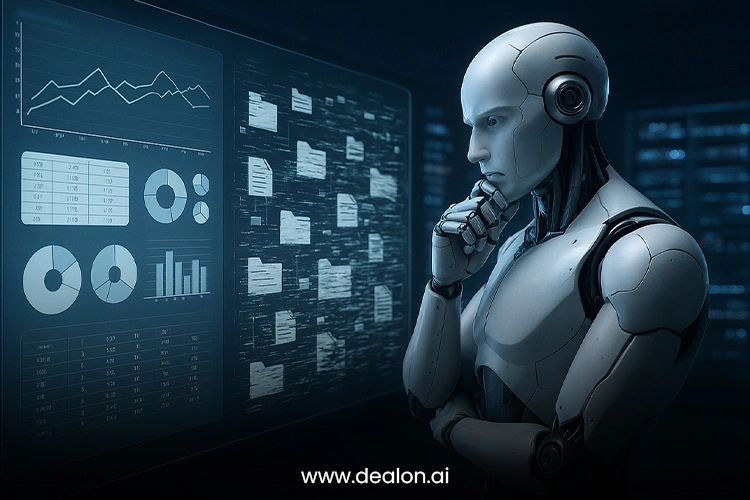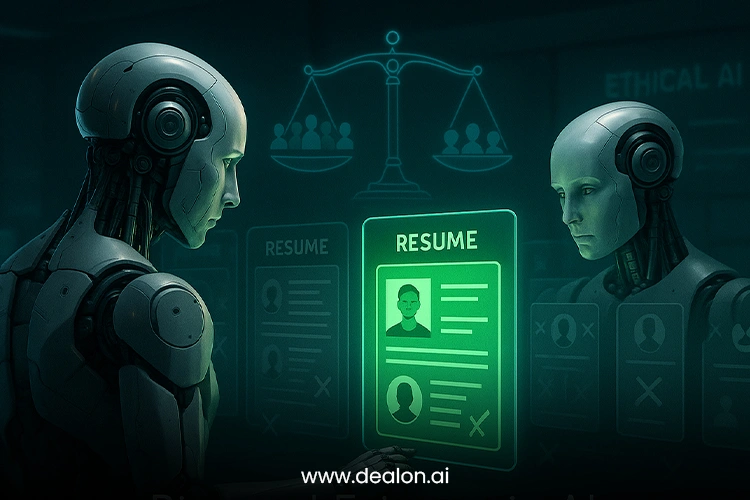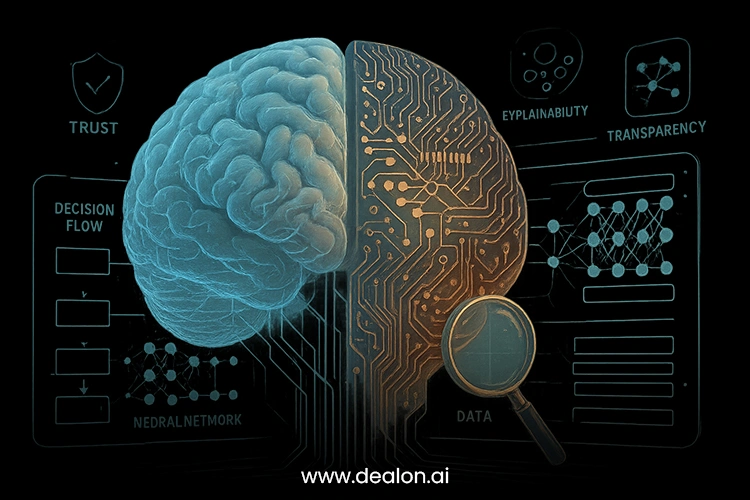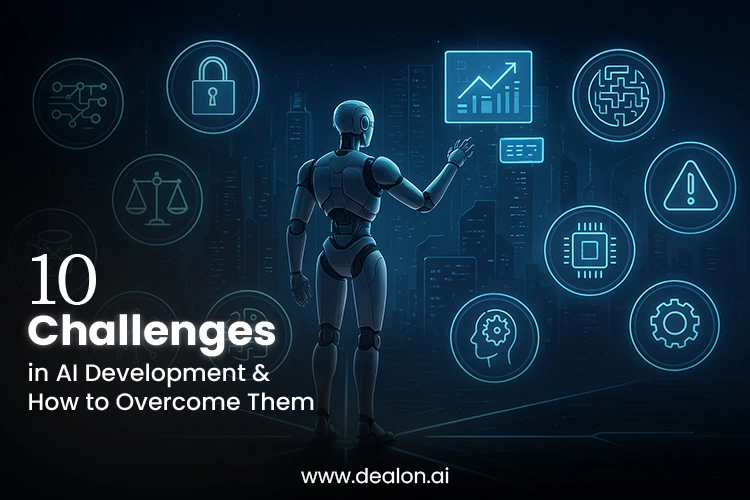Artificial Intelligence (AI) has become the leader of technological progress and its industry disruption due to the automation of most complex processes, the promotion of decision-making, and innovative new approaches to unsolved issues. Ranging all the way to healthcare and means of transport, such as autonomous cars, AI can reinvent human lives on a global scale. Nevertheless, along with less and less sophisticated systems, the development of AI does not lack its significant challenges. These barriers not only create impediments in the smooth absorption of AI technologies but also form a central ethical, technical, and societal conundrum.
The core of these challenges is that it is hard to develop AI that is accurate and ethically responsible. Making sure that AI is fair, transparent, interpretable, etc., is not an easy task, especially considering the constantly increasing complexities of machine learning models. Also, the problem of bias and quality of data is an essential consideration, as it is a quality of data that will result in dangerous algorithms that support discrimination or unreliable calculations. In addition, the large number and the broad assortment of the real-world uses of the AI models create significant technical challenges regarding scaling their requirements to accomplish tasks that require enormous computational capabilities and a high degree of security.
The other key point in the development of AI is its adaptation to the infrastructure previously in use. Most of the industries use outdated systems that were not designed to support the latest innovations in AI technologies; hence, embracing them would be expensive and technically challenging. In addition to these technical impediments, the lack of talented workers in the AI field, in combination with a steadily rising financial burden of R&D investment, only adds to the problem.
In this blogging post, we will understand the top ten urgent issues facing the development of AI, and we will encounter complexities facing data, ethics, scalability, security, and regulation. More to the point, we will present feasible solutions and creative means to alleviate the discussed issues, so that the idea of AI as a transformational force could be realized safely and practically.
Also Read: Visual Search in E-commerce: The Next Frontier Powered by AI In 2025
1. Availability and Data Quality in AI Development

Good data that trains the algorithms that would make up any successful AI system. The machine-learning-driven AI systems, in particular, need a significant amount of data to form accurate models. Nevertheless, the necessary condition of successful AI development is the availability, quality, and accessibility of data, which hinders progress in this area in many cases. The AI models may be biased by incomplete, inconsistent, or biased data that will result in poor predictions and unreliable outcomes.
As an example, incomplete data can lead to data that does not reflect all the essential variables, and thus, a particular AI system will not effectively generalize in various contexts. Likewise, inconsistent data may include formatting and labeling inconsistencies that may confuse the AI algorithms and result in poor performance. More to the point, whether due to social, economic, or cultural biases, biased datasets tend to propagate unfair results when it comes to applications.
The way out of these problems is one of the options, when elaborate data management plans could be created to provide the accuracy and consistency of data. With data augmentation methods, the data fed to train any Python AI can be enlarged, emulating rare contexts that can be improperly underrepresented. Also, the formulation of open data resources would mean more developers will have access, which would democratize the AI development process and make innovation possible in other industries.
2. Burden and prejudice of AI systems

The AI is only as objective as the data it has been trained with, and that is why the issues of fairness and discrimination remain top considerations in the development of AI. The effect of bias in AI may be long-lasting and all-encompassing, particularly in decision-making issues such as recruitment, law enforcement, and healthcare. To illustrate, facial recognition technology demonstrated being relatively accurate in regard to the identification of some demographical groups, but less accurate when identifying the representatives of minority groups, whose cases are likely to end with a misidentification much more often than among the others. Another problem that illustrates the ethical dilemma noticeable in AI is the possibility that it can strengthen societal inequality.
To avoid these risks, the focus of the AI developers should be on the usage of fairness-sensitive algorithms and training their data on all demographic groups. The fourth factor is transparency in decision-making, whereby the stakeholders learn how AI systems come to their decisions. Further, there should be set regulatory frameworks and ethics that help in the development of AI so that the result of its application does not lead to the unintentional reinstatement of prejudices. It is via creating high ethical standards and diversity and inclusion of data compilation that the AI technology can be steered towards more socially acceptable fields of application.
3. Transparency in AI Systems

One of the hottest AI development problems is the black box concept of numerous AI systems, including deep learning ones. These models are highly complex and have many layers; thus, they are likely to behave in a manner that is not easily foreseeable by the developers who create the model and end-users who execute the model. This is obscure beyond reckoning and poses serious questions asking who is to take the blame/or be trusted with and ethical responsibility.
The process of finding why a system makes a specific decision cannot be fully understood in domains where the probabilities of causing harm are too high, like in the field of healthcare or in autonomous driving. Given that AI systems make decisions with direct impact on the lives of people, this lack of transparency may cause people to doubt how dependable and fair the decisions made by the AI systems are.
To address this certainty, the concept of Explainable AI (XAI) has emerged as the hopeful remedy. XAI is the attempt to develop AI systems that are more interpretable and yet do not compromise performance. Such methods as feature importance analysis and saliency maps enable AI systems to show what input factors affect their outputs the most and give a more explicit explanation of their actions.
Moreover, the rule-based models, in which we can describe the methods of decision making in terms that are understandable by a human being, reduce the discrepancy in terms of machine learning and human knowledge. Developers can make AI systems more transparent and interpretable to maintain better accountability and achieve overall trust among users and interested parties through proper readability.
4. Artificial Intelligence Systems Scalability
Although AI models tend to perform well in controlled settings or work with small data, it is where they meet their obstacle when having to scale the system to process extensive data from the real world. The amount of data is growing, and the computational needs of processing, storing, and analysing also rise exponentially with the scale of data. This explosive demand for computational resources may overload the conventional infrastructure and delay, render useless, and even break down the systems.
The cloud computing platforms, as well as distributed computing systems, provide a solution to the issue of scalability. Such platforms offer elastic infrastructure on which the AI solutions can run on demand and scale dynamically, with parallelism and the additional resources needed to run heavy datasets. Also, optimization of algorithms to work more efficiently, in both time and memory complexity, can go a long way in limiting the computational load.
Trends such as simplification of the model, e.g., model pruning, i.e., dropping redundant sections of a model to decrease its complexity, and edge computing to outsource some of the processing work to local devices, can aid in simplifying AI systems and make them efficient and scalable even in the real world. With a combination of these measures, AI designers would beat the scalability issues and design powerful and efficient models that will perform flawlessly at work across various settings.
5. Vulnerability and Security Menaces of AI-Based Systems
With the further penetration of AI into the most important spheres of life, including healthcare, transport, and finance, it is becoming increasingly relevant to ensure the security of these introduced systems. Adversarial attacks against AI models, including deep-learning-based models, can be applied to induce them to produce erroneous or dangerous outputs by modifying their inputs slightly. Another example is that a minor deformation of the pixels of a picture might trick a self-driving vehicle into reading an error on a stop sign, and that would have disastrous consequences.
On the same note, slight perturbations of data in medical diagnostics might result in incorrect diagnoses, endangering patients. Such flaws are not merely hypothetical but have been shown to be practically possible, and giving security to AI systems is of particular concern. Developers will have to apply a layered strategy in the testing and validation of their systems in order to deal with these security issues. The resilience of the model can be enhanced using such techniques as adversarial training, when distorted data is shown to AI systems in the training process.
Penetration testing frameworks can be used under the simulation of a significant number of attack vectors to uncover possible weaknesses before deploying the application. Moreover, the incorporation of AI-related cybersecurity solutions, including encryption, safe data transferring, and abnormality identification, can enhance the safety against adversarial interferences. Ensuring security will be the primary concern in keeping the AI in check and preventing it as it becomes more and more prevalent in daily life.
6. Regulatory and Legal Guidelines of AI
The development of AI has mushroomed with there being no comprehensive regulatory and legal framework that has been developed, and therefore, developers and organizations find themselves in a twilight world over the ethical usage of AI. Due to the increased abilities and the fact that AI systems are becoming more autonomous, the issue of accountability, privacy, and the moral aspects of AI decision-making arises. The outlined regulatory lapse provides an opportunity in which AI developers feel uncertain regarding the extent of legality and morality that they are allowed to work in. In the absence of guidelines, AI applications may be applied in a manner that may result in unintended consequences to society or even the law.
7. Legacy System integration
Although technology has been evolving at an incredible speed, most of the enterprises continue to use outdated systems that do not have the capability to support the present-day AI structure. The fact that such obsolete systems are commonly based on conventional databases, programming, and manual processes creates a significant obstacle in the case of incorporating AI solutions. It is not only the technical challenge of interlinking state-of-the-art AI models with old platforms that remains high, but completing an entire system overhaul is also quite expensive. As an example, the cost of upgrading infrastructure as a whole to facilitate AI may be too costly and disruptive, especially to small to medium-sized enterprises.
Through the creation of middleware solutions, APIs, and software, companies can also offer smooth interfaces to their legacy systems with AI models. These APIs are considered a bridge between the old and the new systems since they help to channel data between the two without the need for an overhaul. Moreover, the gradual addition of AI enables businesses to expose their AI usage to some real-life interactions before the implementation, which significantly reduces the risk factor and maximizes the gain. This practice helps not only in cost reduction but also in giving organizations the freedom to expand or downsize their AI design.
8. Case of Skill Shortage in AI Development
AI systems engineering is extremely high-skilled work and involves machine learning, neural networks, data science, and computational mathematics, among others. Although talent shortage is a problem nowadays since the demand for skilled AI professionals is much higher than the supply, there is a talent shortage, resulting in difficulties in creating stable AI development teams among organizations. As AI becomes a bigger part of the business processes, it also leads to an even stronger competition for human talent, especially in niche areas such as healthcare, finance, and independent systems.
A multi-faceted solution must be put in place to handle this essential shortage. To begin with, educational programs aimed at AI and similar studies need to be tightened. Industry-academic partnership can contribute to designing the curriculum to keep it relevant to the current changes of the workforce related to the sphere of artificial intelligence. Upskilling of existing staff members is also possible, creating another way to bridge the gap so that the organisations can take full advantage of the talent they already have.
Bridging the skills gap can also be achieved through the use of artificial intelligence-powered development tools that facilitate the design and deployment of models. The tools have simple interfaces and automatic model training, something which allows less experienced programmers the chance to work on AI projects. Investing in education, collaboration, and the availability of technologies, firms will be able to solve the talent problem and enhance the innovation speed of the AI solution implementation.
9. Research and Development of AI Cost
The costs are high to finance the research and development of AI. The creation of AI implies considerable investments in the latest infrastructure, high-quality staff, and powerful computational resources. The deep learning models at the core of AI require high-performance computing systems, large amounts of data storage, and special hardware. These expenses are so burdensome to startups and small corporations that they cannot compete in the industry of AI, which is evolving at an accelerated pace. Moreover, there is high demand for expertise needed in the development of AI, and these talents usually attract high pay as well, another factor that makes the situation even more expensive.
One way to narrow down these expenses is by having smaller organizations partner up with academic institutions that, in most cases, possess access to superior research centers and knowledge on AI. This kind of cooperation may bring benefits to both sides: startups can use the most advanced facilities, and universities can transfer their studies into practice. It is also possible to loosen financial constraints by attracting the support of government grants or venture capital, as several governments acknowledge the potential of AI to promote innovation but are very eager to fund its research.
Also, using open-source AI frameworks has been an effective cost-saving plan. Using open-source frameworks such as TensorFlow, PyTorch, or Scikit-learn, companies might apply the most recent research in the field of AI and technologies without spending their money on costly proprietary software. They are the solutions through which smaller organizations can become a part of the AI without spending a fortune on its implementation, and stay competitive in the growing AI-driven market.
10. Assuring Human-AI Collaboration
AI becomes the most effective when it enhances human skills and not when it substitutes them. There are many different areas where AI systems can be used to assist human decision-making in processes (medical, financial, customer service, etc.). Nonetheless, smooth human-AI interaction has its critical pitfalls, especially regarding trust, usability, and the adoption of the system in the preexisting schedule.
A human-centered design strategy should be incorporated to guarantee that AI systems can be adopted into human-driven settings successfully. It includes developing AI systems that would be predictable, explicable, and human-friendly. Through this engagement of the stakeholders, be it doctors, your customer service representatives, or leaders in business, the AI may be customized to suit the requirements of the individuals who are going to employ it. The key aspect of this teamwork is that AI-based products supplement human capabilities, and they do not oppose or force users to fit into sophisticated technologies.
Besides, it is also critical to user-level training so that the integration of AI is a success story. The human workers must be trained to work with AI wisely, to know and understand its possibilities and drawbacks. With the seamless integration of AI into the work of people, one can not only enhance productivity but also guarantee that people are given a chance to make more informed decisions. Through the human-AI partnership, organizations will be able to get the best out of AI, without leaving the strengths of human oversight and judgment behind.
Conclusion
Although the development of AI opens up enormous opportunities, the issues associated with it have to be overcome to make the best use of these opportunities. The problems, such as data quality, transparency, and threats to data security, have to be solved, and then there are such challenges as the cost barrier and the lack of adequate skills, which have to be overcome by innovative solutions, too. The financial and technical limitations may be countered with phased integrations, academic institutions partnerships, and the utilization of open-source frameworks.
Moreover, the maximum potential of AI can be realized by guaranteeing high-quality collaboration between humans and AIs designed in a way that makes them user-friendly and trained as extensively as needed. With further development of AI, it will be essential to consider the opportunity to establish ethical, transparent, and collaborative ways to make the transformative effect it produces both beneficial and sustainable.

